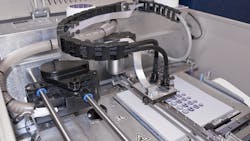Five Ways to Profit From the New Rapid Prototyping Movement
For the first time in awhile, North American designers have reason to be optimistic about domestic production of their most innovative products. Rapid prototyping with technologies such as 3D printing is helping fuel the shift.
In the U.S., Google has already announced plans to manufacture its Glass interactive eyewear not in China but in Santa Clara, Calif., a stone’s throw from its Silicon Valley headquarters. But this is still the exception rather than the rule. Canada’s BlackBerry outsources a substantial portion of its manufacturing to Malaysia, for example.
And yet even if designers are outsourcing less often, they aren’t always hiring expert help. Start-up centers sometimes referred to as “hackerspaces” now include basic prototyping equipment, taking work that in years past might have flowed to stand-alone production facilities. Manufacturing backlog has fluctuated as a result: Canada’s Purchasing Managers’ Index fell to 49.3 in March from 51.7 in February.
What to do? Offer an attractive alternative for prototyping work. Here are five tips for doing precisely that, but without compromising the production line:
- Create a lab for experiments. Prototyping is the natural outcome of research and development work. Set aside idle workspace that looks and feels like a lab, featuring the attendant equipment needed for aggressive, regular experimentation. Staff with workers idled by completed projects or willing to come in on off-hours to learn new skills as they generate incremental revenue for the company.
- Anoint an entrepreneur in residence. Follow the example of venture capitalists who hire experienced entrepreneurs in order to give them the space to work on a new business idea that ultimately becomes a company. How? Survey existing staff to find those willing to try something new. Fund equipment and give them an allowance of hours for prototyping work. Tie further investments to goals, such as bringing in clients or improving output.
- Use extended hours productively. Don’t wait to create a formal operation. Instead, allow some workers to make use of R&D space in off-hours for prototyping work. Bring in outside experts to teach best practices during the evenings or before work. And be sure to reward progress if overtime efforts bring in new revenue and clients.
- Try creative partnering. Treat suppliers as potential partners. For example, strike a deal with a local 3D printing service provider to join forces for prototyping work and share profits. Seek external allies who might benefit from your team, space, and resources in exchange for assistance serving clients with prototyping needs.
- Reward attempts rather than wins. Anything new is bound to bring some measure of failure. Don’t obsess over these misses. Instead, take on as many projects as you can in the early stages, track mistakes, and then refine as needed. Repetition is the key to winning clients and building expertise.
For as much as 3D printing is changing the manufacturing process, the process of building and sustaining a manufacturing business has shifted hardly at all. Now it seems those days are coming to an end. Don’t wait to suffer the consequences. Experiment. Partner. Embrace innovation every bit as much as the innovators that need your services.
John Mills is executive vice president of Business Development at Rideau Recognition Solutions, a global leader in employee rewards and recognition programs designed to motivate and increase engagement and productivity across the workforce.
About the Author
John Mills
Executive Vice President of Business Development
John Mills is executive vice president of Business Development at Rideau Recognition Solutions, a global leader in employee rewards and recognition programs designed to motivate and increase engagement and productivity across the workforce.
